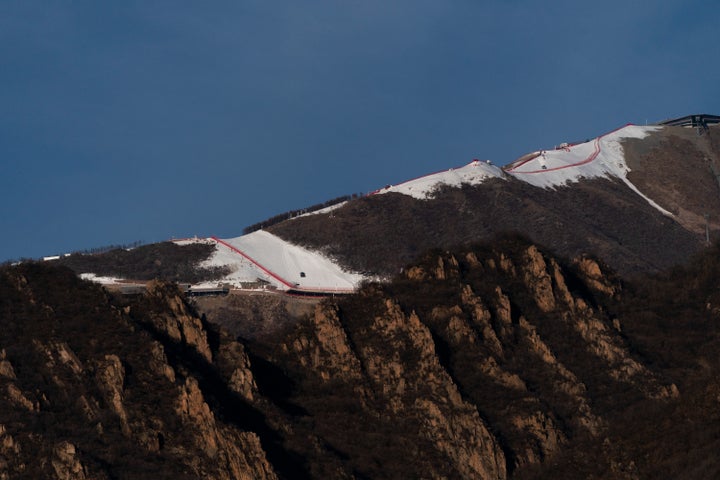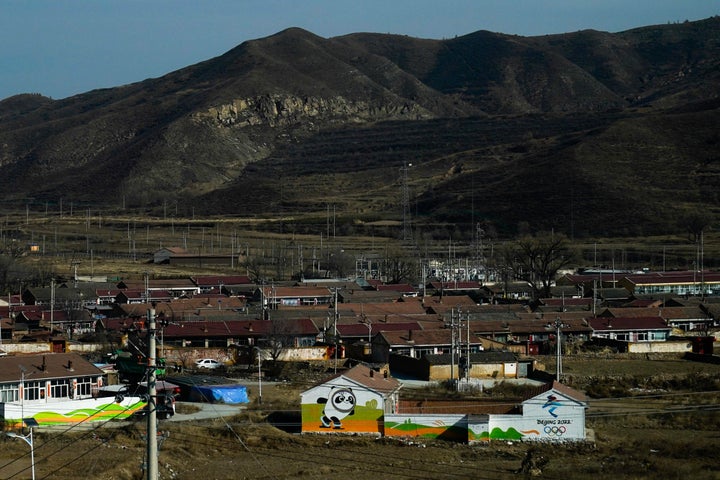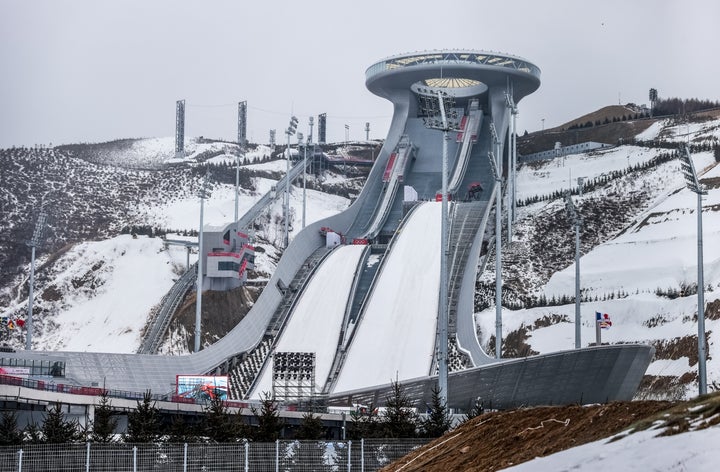Ski racers settling into the start gate for Alpine World Cup events in the Rocky Mountains in early December squinted through sunshine that carried the temperature toward 50 degrees and glanced down at a course covered with pristine — and manufactured — snow.
If they looked up and across the way, beyond the finish line, they saw adjacent hills that were brown and barren as can be, with nary a trace of powder or any indication that this was a setting for athletes who would be heading to the Beijing Olympics that begin Feb. 4.

It is a troubling reality and — given their own reliance on the production of snow, continent-hopping flights powered by diesel fuel and other environment-unfriendly offshoots of their careers — hard-to-reconcile push-and-pull for many of those who will be competing in Alpine skiing or freestyle skiing or snowboarding or Nordic combined events or other outdoor sports that helped put the disappearing “Winter” in Winter Games.
“Climate change is here. It’s happening. We’re living in it right now. It’s not something that’s going to be in the distant future. It’s here. And you see it with the fires in California, floods in Europe, higher snow levels, shorter winters, longer summers, droughts. It runs the whole gamut. Everywhere in the world is having some effect from it. And there’s not really any turning back,” said Travis Ganong, a 33-year-old from California going to China with the U.S. ski team.
“Selfishly, I hope winters are here in the future,” he said. “But it’s not looking good.”
Global warming is altering, and endangering, his and other sports, perhaps permanently, and not just at the elite level. It affects folks who just want to ski or snowboard for fun and those who make a living from places offering such activities.
And, well, everyone on the planet, of course, because this affects far more than sports, of course.

Just one example: In December, Colorado set a record that stood since the 1880s for most consecutive days without snow. After warm temperatures and just an inch of snowfall by Dec. 30, wind-fueled wildfires destroyed hundreds of homes in the state.
The last eight years rank as the eight hottest on record for Earth, according to two U.S. science agencies, NASA and the National Oceanic and Atmospheric Administration.
“The glaciers are receding. The winter is starting later and ending sooner,” said John Kucera, the 2009 world champion in downhill who now is a coach for Canada’s Alpine team. “For a sport like ours, we might pay for it sooner than some others. We are dependent on the climate and the weather and that dictates what we’re able to do.”
The fallout is widespread.
It’s harder to find glaciers suitable for training, so athletes need to search for new locales — or even head indoors. It’s harder to hold World Cup events, because too much wind or too much snow or too little snow leads to postponements or cancellations.
It’s harder to find real snow anywhere, so competition increasingly comes on machine-made snow, which has its own deleterious effects on the environment. While the high speeds, steep inclines and sharp angles make danger a constant presence in Alpine skiing, no matter what sort of stuff is underfoot, injury-causing crashes are increasingly common in Nordic skiing and biathlon because the snow created by people produces harder, slicker tracks.
“We definitely have noticed a lack of snow everywhere. Places that, in December, November, used to be ‘winter wonderlands,’ we’re seeing them with less and less snow. And some years, they’re not getting any snow,” said Taylor Fletcher, who grew up in Colorado, is based in Utah, and made his fourth Olympic team in Nordic combined.

Plenty of Winter Olympians share similar observations.
“I’m no meteorologist,” Italy’s Marta Bassino, last season’s World Cup giant slalom discipline winner, said with a chuckle, “but I see it with my eyes.”
Alexis Pinturault, a three-time Olympic medalist for France, recalls hitting the slopes at Tignes in his country’s Alps 20 years ago, but notes “it’s nearly impossible to ski there anymore.” U.S. aerials skier Winter Vinecki remembers an event in Belarus where, instead of a season-appropriate setting, she competed amid water puddles. Explains Taylor Gold, an American snowboarder who is part of Protect Our Winters, an athlete-driven environmental group: “The absolute ideal scenario would be to have a halfpipe made entirely of natural snow, but that’s just never possible anymore.”
A study recently published in “Current Issues in Tourism” projected that without a dramatic reduction of global emissions of greenhouse gases, only one of the previous 21 Winter Olympics sites would be able to reliably provide fair and safe conditions by the end of this century.
Researchers from Austria, Canada and the U.S. determined that even with emissions on the lower end of the scale, just three of 12 European cities that have hosted Winter Games would be a reliable site by the 2050s.
“Part of what we do papers like this for is to get the message out that we have a large influence ... and so, if we act, (there is) hope of avoiding those worst-case scenarios,” said Daniel Scott, a professor at the University of Waterloo who co-authored the study, “Climate change and the future of the Olympic Winter Games: athlete and coach perspectives.”

